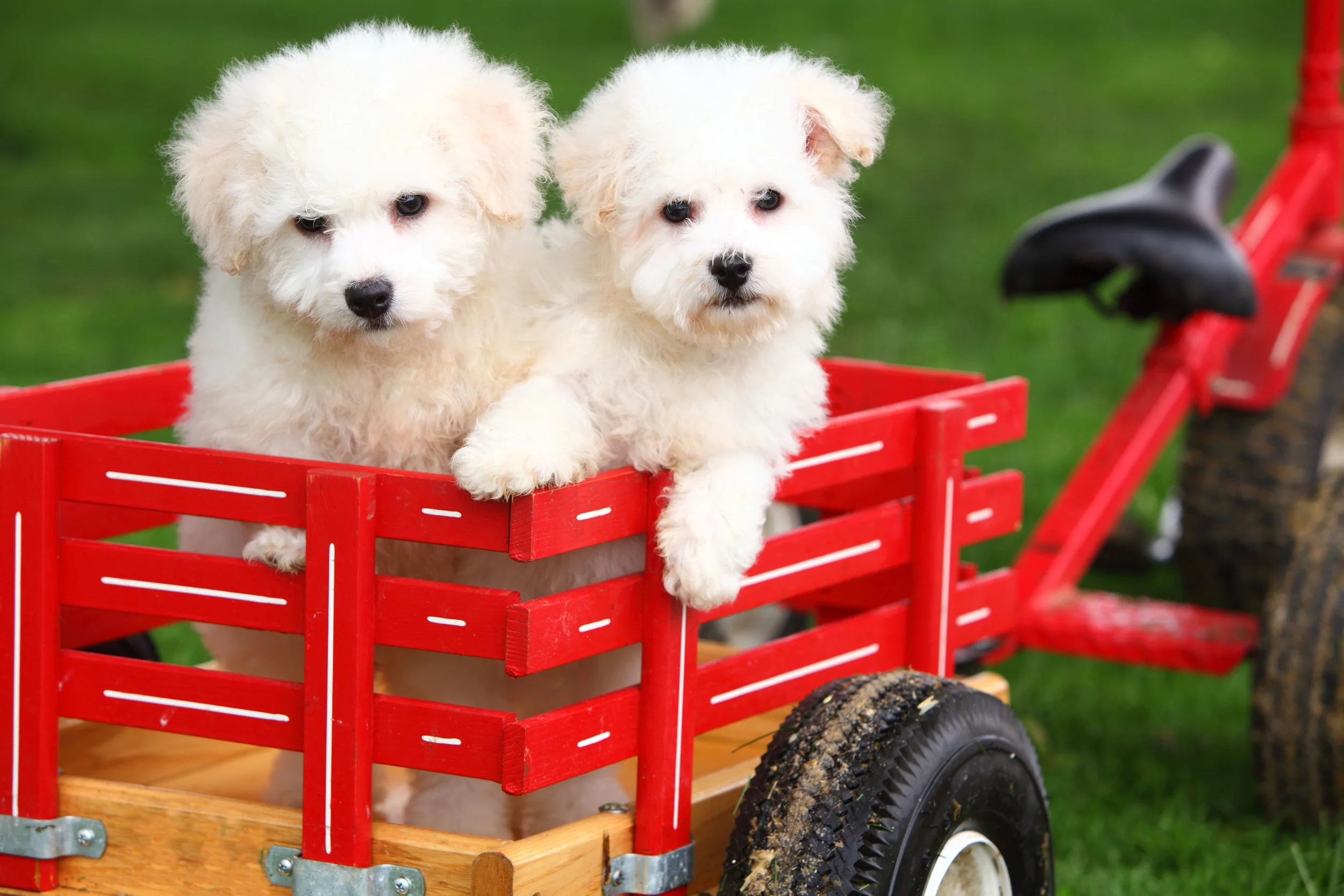What is a Bichon Frise?
If you have never heard of a Bichon Frise (pronounced bee-shawn free-zay) or have only recently become aware of the breed, don't feel like you are alone. We were totally ignorant of the breed until 2001.
In researching the Bichon, we found that it is descended from the early Water Spaniel and is frequently mistaken for a Poodle because of its curly coat. It is primarily a companion and show dog in today's society, but was once the delight of Spanish sailors during the Renaissance and became a favorite pet of Italian and Spanish noblemen and the royal court. It was not until late in the nineteenth century that the valued lapdog fell out of favor with the aristocracy and became more of a commoner's dog. At this time, indiscriminate breeding took place and the once-pure bloodlines became diluted. Some time after World War I, a conscientious group of French breeders took on the task of restoring some of the Bichon's former glory.
By March, 1933 a standard for the breed had been written and in May, 1964, the Bichon Frise Club of America was founded. On April 4, 1973 the Bichon Frise received full recognition as a Non-sporting Group breed at American Kennel Club shows.
What appealed to us most regarding the personality of the Bichon was that it was truly a family pet. The Bichon has an "I love you" personality that is willingly shared with anyone. Unlike several of the smaller breeds, the Bichon does not bond with just one person, but is willing to share its charming affection with all members of the family and anyone else who wants some "love".
Reference: Bichon Frise by Martin Weil; T.F.H. Publications, Inc. Ltd.; 1990
